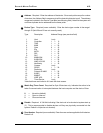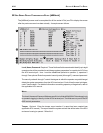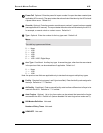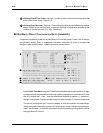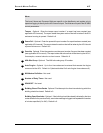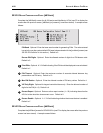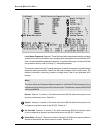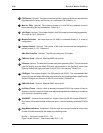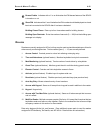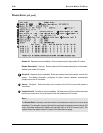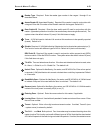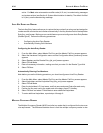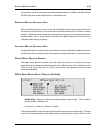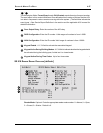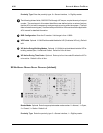
SECTION 4: MASTER FILE ENTRY 4-31
Duress Enable. Indicates with a Y or an N whether the PIN duress feature of the SE 422
is turned on or not.
Show PIN. Indicates with a Y or an N whether the PIN number should be displayed on a local
terminal connected to the SE 422 after it has been calculated.
Building Closed Times. Enter up to four time codes used for building closure.
Building Open Reminder. Enter the number of seconds (0 — 240) that the building open
message is to display.
READERS
Readers are usually assigned to ACUs, but they may be used as standalone devices or linked to
other security monitoring devices. Twelve reader types (1 — 12) are currently defined:
1. Access Control. Controls power to a door lock allowing or denying entry.
2. Time and Attendance (optional feature). Monitors keyholders' entry/exit movements.
3. Meal Monitoring (optional feature). Tracks number of meals taken by a keyholder.
4. Guard Tour (optional feature). Monitors guard check-in activities during guard rounds.
5. Elevator Control. Controls and limits keyholder access to floors.
6. Activate (optional feature). Enables keys for system wide use.
7. Deactivate (optional feature). Disables previously activated keys (see previous item).
8. Auto Key Entry. Allows automatic entry of card numbers.
9. Access with Keypad. Same as #1 except that a keypad is used in addition to the reader.
10. Keypad. Keypad only.
11. Access with Two-Man Rule. (optional feature). Same as #1 above except that two-man
rule is in effect.
12. MultiOcc Reader. Multiple occupancy reader. Similar to #11 except that it requires that two
keyholders enter and leave a zone together. Refer to the subsection that covers multiple
occupancy readers in this section for more details.
Data entry begins with the [rdr_entr] screen. (One additional screen each is used for readers
assigned to SE NexSentry, 8xx series, and 422 ACUs. Details follow this subsection.)



